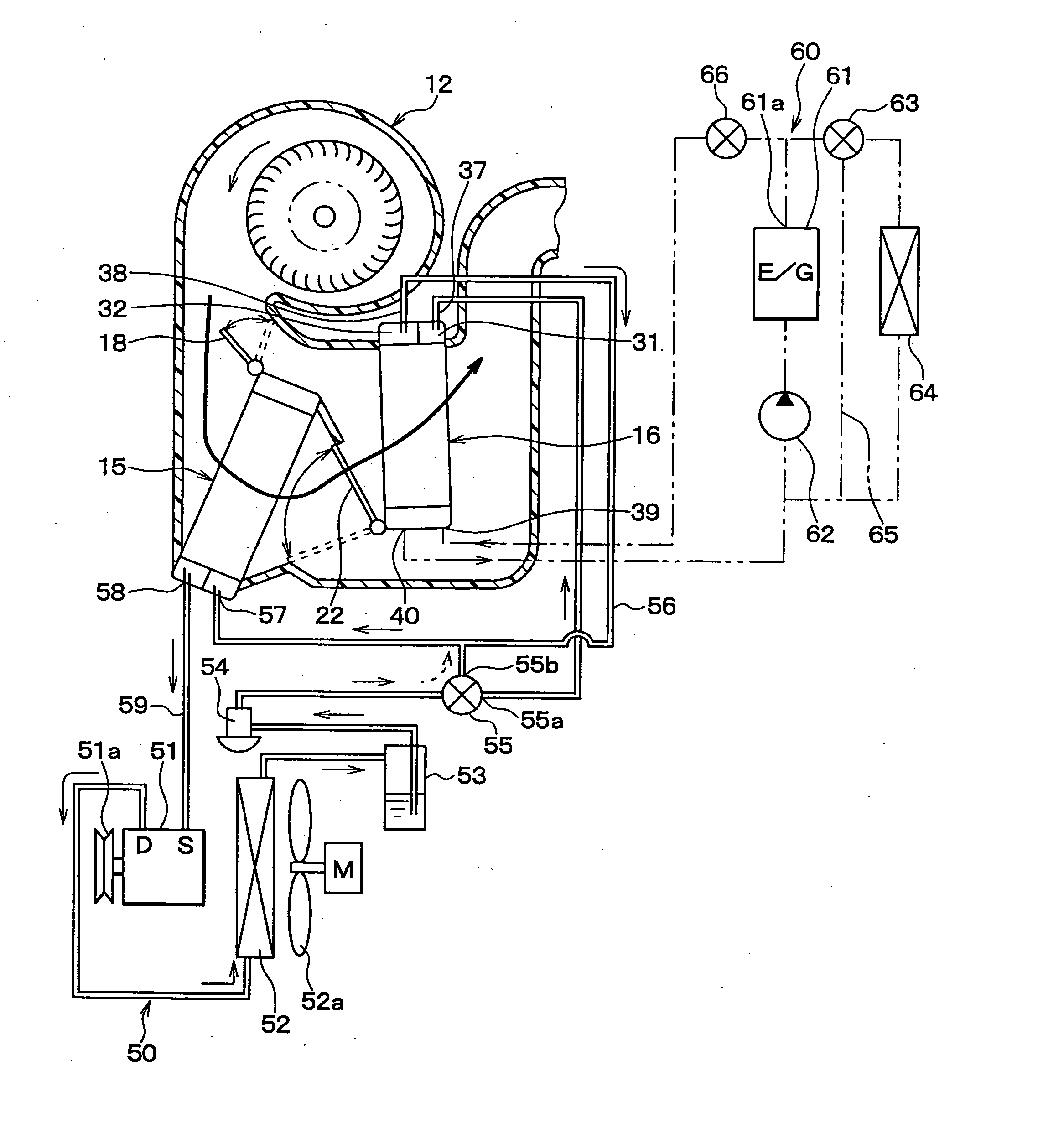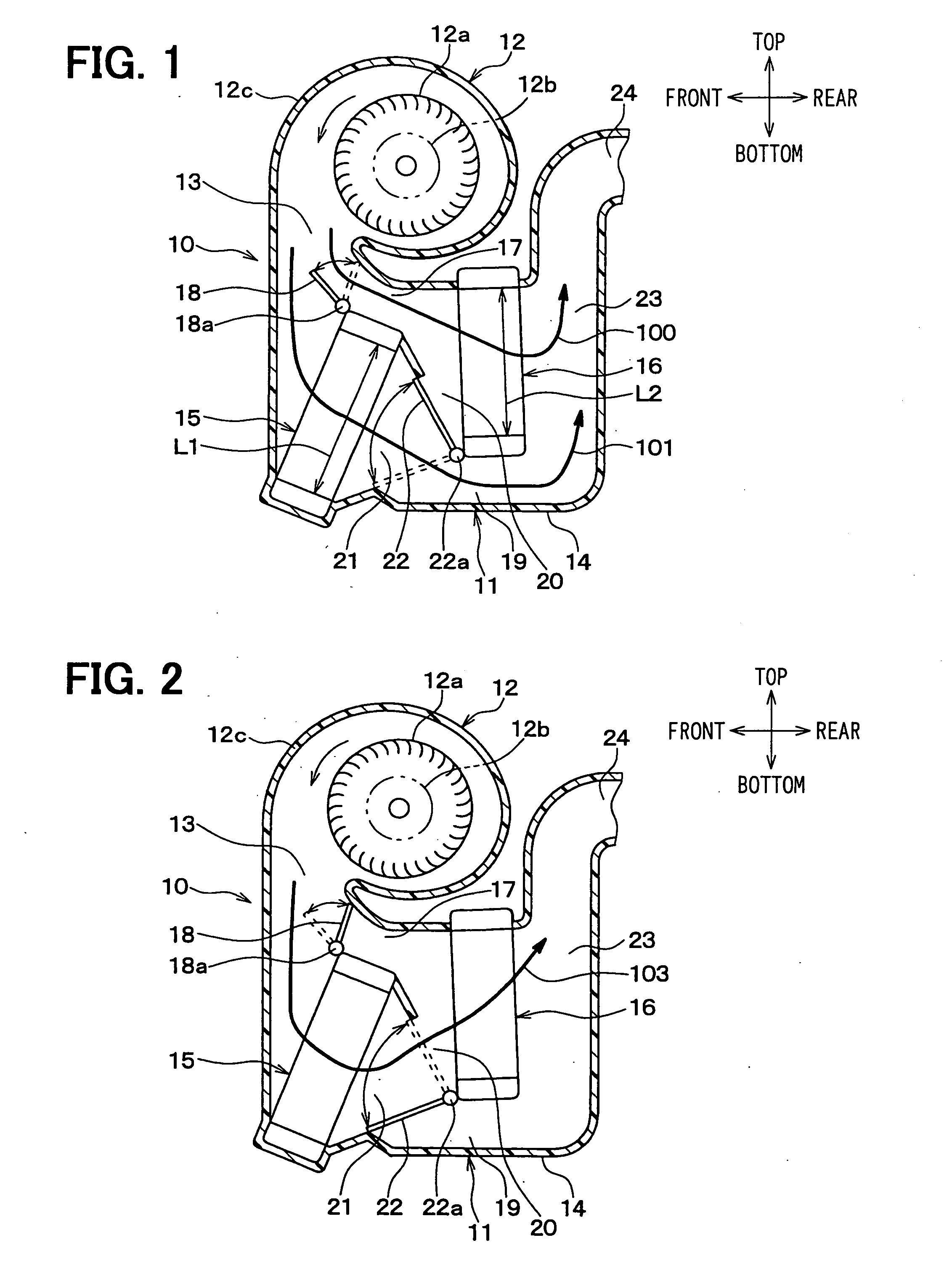Vehicle air conditioner
a technology for air conditioners and vehicles, applied in the field of vehicles, can solve the problems of increasing the difficulty of reducing the size of the interior air conditioner uni
- Summary
- Abstract
- Description
- Claims
- Application Information
AI Technical Summary
Benefits of technology
Problems solved by technology
Method used
Image
Examples
first embodiment
[0028] The first embodiment of the present invention will be now described with reference to FIGS. 1-8. In the first embodiment, an interior air-conditioning unit 10 is mounted in a vehicle in an arrangement state shown in FIGS. 1-4.
[0029] The interior air-conditioning unit 10 includes an air-conditioning unit portion 11 having therein heat exchangers, and a blower portion 12 disposed at an upper side of the air-conditioning unit portion 11. The blower portion 12 is constructed with a centrifugal fan 12a, an electrical motor 12b for driving the centrifugal fan 12a, and a scroll casing 12c for accommodating the centrifugal fan 12.
[0030] A suction port (not shown) of the centrifugal fan 12a is formed on a side wall of the scroll casing 12c in a vehicle right-left direction (face-back direction of paper in FIGS. 1-4), and an inside / outside air switching box (not shown) is provided to be connected to the suction port. The inside / outside air switching box has an outside air introductio...
second embodiment
[0089] In the above-described first embodiment, when the temperature control mode shown in FIG. 4 is set, the first bypass door 18 is operated to the solid line position to fully close the first bypass passage 17, and the rotation position (i.e., opening degree) of the second bypass door 22 is changed so that the temperature of the air blown into the passenger compartment is controlled to a target temperature in the predetermined temperature range.
[0090] In the second embodiment, as shown in FIG. 9, when the temperature control state is set, the second bypass door 22 is operated to the solid line position to fully close the communication passage 20, and the rotation position (opening degree) of the first bypass door 18 is changed so that the temperature of air blown into the passenger compartment is controlled.
[0091] According to the second embodiment, a part of air blown by the blower 10 bypasses the cooling heat exchanger 15 to flow through the first bypass passage 17 (shown by ...
PUM
 Login to View More
Login to View More Abstract
Description
Claims
Application Information
 Login to View More
Login to View More - R&D
- Intellectual Property
- Life Sciences
- Materials
- Tech Scout
- Unparalleled Data Quality
- Higher Quality Content
- 60% Fewer Hallucinations
Browse by: Latest US Patents, China's latest patents, Technical Efficacy Thesaurus, Application Domain, Technology Topic, Popular Technical Reports.
© 2025 PatSnap. All rights reserved.Legal|Privacy policy|Modern Slavery Act Transparency Statement|Sitemap|About US| Contact US: help@patsnap.com



